Almost half of people around the world block ads, but many disable their ad blockers, or “whitelist” certain websites. As the online advertising landscape changes, ad-fatigued users look for ads with improved user experience. People whitelist websites where ads are less intrusive, such as on social media, and some are even willing to pay a premium for a completely ad-free internet experience.
Ad blockers are growing in popularity among younger, tech-savvy consumers. A March 2019 report from GlobalWebIndex shows that 47% of people worldwide block ads, making ad-supported businesses fearful of the technology’s effects on their bottom line.
Almost all ad blockers, however, allow users to disable the technology temporarily for specific pages or domains. This feature, known as “whitelisting,” is more popular among ad blocker users than businesses may believe.
We surveyed 500 people who use ad blockers to understand their advertising preferences, what websites they whitelist, and their sentiments about the online advertising industry as a whole.
We found that people who use ad blockers are willing to whitelist websites when the advertisements they see don’t disrupt their overall user experience (UX). But website users are still unwilling to pay for a completely ad-free internet experience, despite being aware of ad blockers’ negative effects on publishers. People who use ad blockers are looking for ads with better UX.
Businesses can use this report to create an online advertising strategy that meets users' add preferences.
Our Findings
- Almost two-thirds of ad-blocking consumers (60%) have “whitelisted,” or paused their ad blocker on a website, giving businesses an opportunity to market to ad-fatigued consumers.
- Of the users who whitelist websites, 28% say they chose to disable the ad blocker because it prevented a page from loading. Disrupting website functionality to combat ad blockers, however, may alienate users.
- Most people who use ad blockers (56%) have disabled the tool on social media platforms more than any other website because social media ads are the least disruptive to the user's experience.
- Two-thirds of people who use ad blockers (66%) customize their ad preferences on ad-supported websites, with 45% customizing their Facebook ads. This shows that users prefer control over their ad experiences.
- More than one-third of ad-blocking consumers (35%) are unlikely to pay for an ad-free internet experience.
Invest in Advertising but Understand Users' Ad Preferences
Ad blockers allow users to selectively enable ads, or “whitelist” pages and domains that users want to support. Understanding how and why people whitelist websites can inform businesses’ advertising strategies.
Sixty percent (60%) of ad-blocking consumers will allow ads on certain websites when browsing online. This is encouraging for businesses since it shows that advertising is still an effective way to attract customers.

Almost one-third of people who use ad blockers (30%) don’t whitelist, and 11% are unsure if they have ever whitelisted a website.
Ben Williams is Director of Advocacy at eyeo, the Cologne, Germany-based software company behind popular ad blocker AdBlock Plus, micropayment provider Flattr, and Trusted News, an app that helps users spot false or misleading information. He explained that whitelisting came about as people realized the adverse effects of ad blockers on publishers.
"What we’ve been finding … is that most people don’t want to block everything,” Williams said. “The product people wanted was [the ability] to block the most invasive types of ads and to let some ads through in order to support publishers.”
The earliest ad blockers prevented all ads from breaking through to users, but developers soon realized that users only wanted to block ads that were intrusive and disruptive, leading to the creation of whitelisting.
Like other ad blockers, AdBlockPlus makes it easy for people to whitelist websites in their settings.
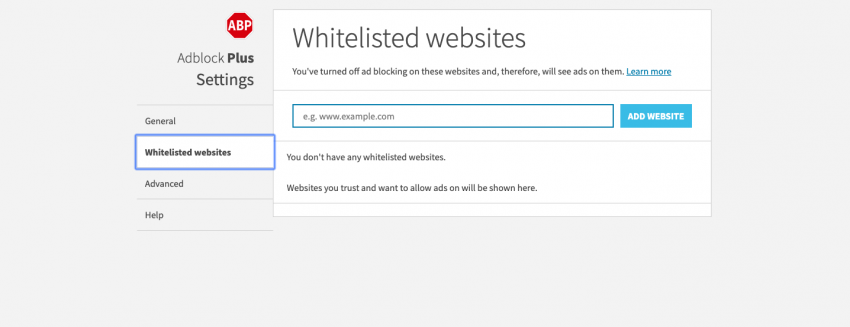
Whitelisting is often seen as an alternative to “paying” for content. Users can support useful content and publishers by opting to see ads on their page while blocking irrelevant or annoying ads.
Encourage Whitelisting with Unintrusive Content
Publishers and businesses that rely on advertising revenue hope that ad-blocking consumers will whitelist their websites, but these businesses shouldn’t force consumers to whitelist their website by breaking down basic website functions, such as preventing a page from fully loading or disabling images.
More than one-quarter of consumers who use ad blockers (28%) whitelist websites to restore page functionality.
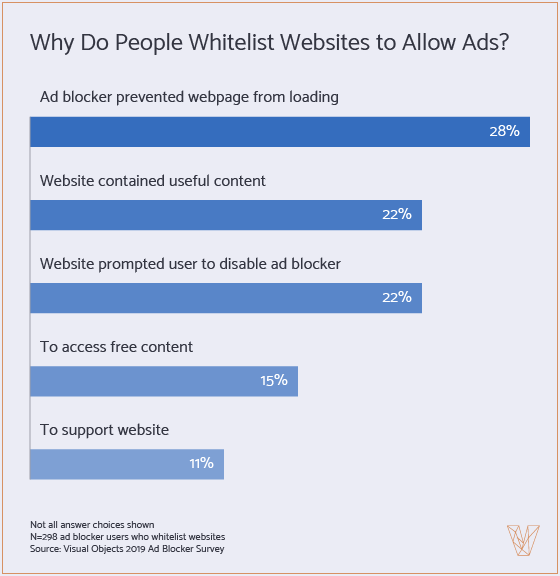
Other reasons people whitelist websites are to view useful content (22%), fulfill prompts from the website to disable the ad blocker (22%), access free content (15%), and support a website or brand (11%).
Businesses that rely on money generated from advertising may disable or limit website functionality for ad-blocking consumers. For 28% of people, this is an effective strategy, but research from Clutch shows that 63% of people will abandon an unreliable website permanently.
Experts say limiting website function for ad blockers disrupts the website’s UX and can instead drive people away from the website for good.
“I ignore sites that don’t let you browse without disabling ad block,” said Dary Merckens, chief technology officer of AWS Partner and Developer Gunner Technology. “There is enough content out there to last a thousand lifetimes, so the important thing at this point is to cultivate and support chosen sources of content.”
Publishers risk alienating users like Merckens, who are happy to find similar content elsewhere when websites reduce page functionality due to ad blockers.
For example, Business Insider is one news outlet that requires users to disable ad blockers to view content.
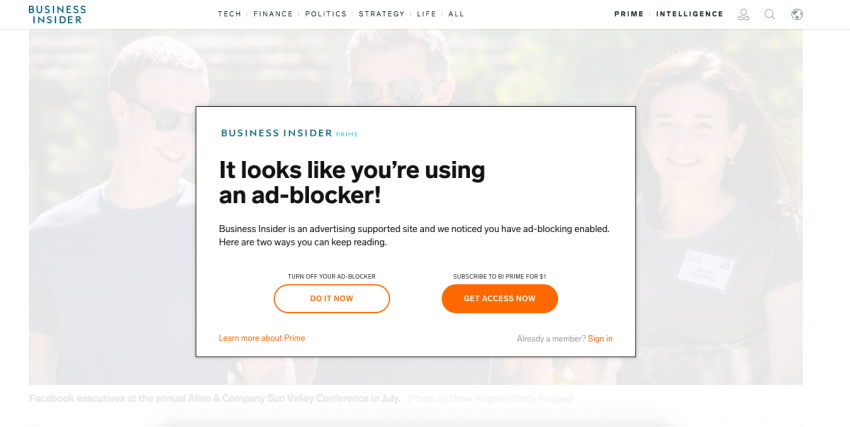
The pop-up presents users with only two options: Disable the ad blocker or pay a fee to view the content without ads. These limited options disrupt the user experience and may lead readers to look elsewhere for content.
Instead, businesses and publishers should prioritize the user experience when asking users to disable ad blockers. This will elicit a more empathetic and human response.
Websites such as Seeking Alpha give people the option to close the pop-up window and browse without whitelisting the website.
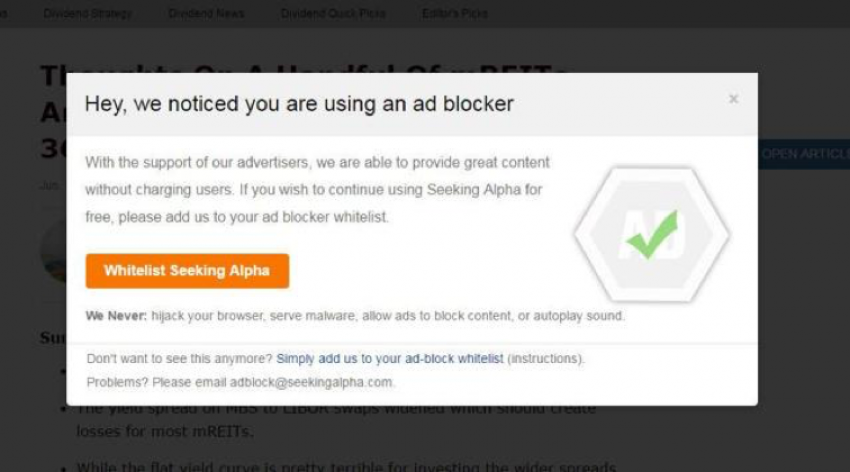
The small “X” in the top right corner allows users to close out of the window. Despite making an empathetic appeal, Seeking Alpha does not require ad-blocking consumers to disable their ad blocker to access content.
David Martin, UX strategist at digital agency From the Future, describes this approach as an “optional journey” where users aren’t forced to sacrifice their experience for content.
“In this case, it’s a more empathetic ask,” Martin said. “They’re asking me, as a person, to please help them out because displaying ads actually helps them make money. But if I choose to close out that message because I’m in a hurry, I’m not barred from using the website or navigating onto another article.”
Martin argues that businesses should use pop-up requests to disable ad blockers with caution and make it easy for users to close out of pop-ups to access content – even if they choose not to whitelist the page or domain.
Businesses looking to entice users to whitelist their website should make a request with an unobtrusive design element such as a small banner or easy-to-close pop-up.
Use Social Media Ads as a Model for Website Ads
People are more likely to whitelist websites where ads are the least intrusive, such as on social media platforms. Therefore, businesses should incorporate ads into their websites similarly to social media or include social media in their advertising model.
More than half of people who whitelist (56%) do so on social media platforms.
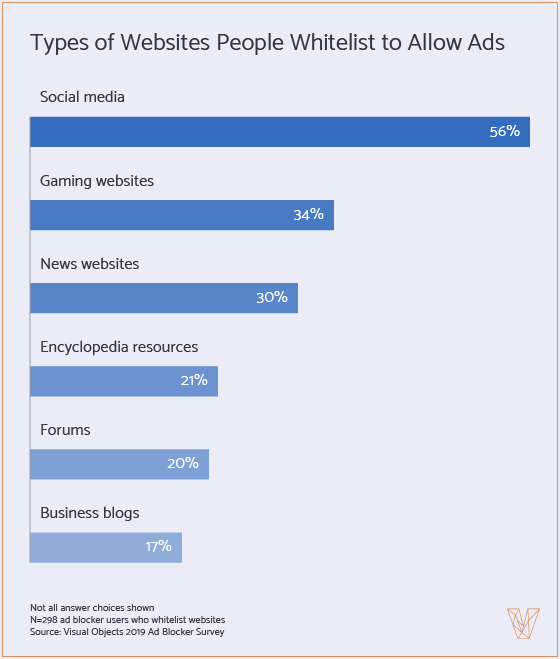
More than one-third of people (34%) whitelist gaming sites, and 30% whitelist news outlets, both of which frequently request users to disable their ad blockers while browsing.
Nearly one-fifth of people whitelist encyclopedic resources (21%) and forums (20%), and only 17% of people disable ad blockers for business blogs, which largely rely on advertising revenue.
Consumers’ willingness to whitelist ads on social media websites creates opportunities for small businesses advertising on the platforms. Businesses can reach a wider audience on social media because people are more willing to whitelist on these websites.
Many ad blockers have a negligible impact on platforms such as Facebook. UBlock Origin’s browser extension, for example, only blocks the paid advertisements that appear to the right of Facebook’s news feed, shown below.

In the image, the International Rescue Committee’s sponsored post on the left remains in the news feed, while the ad blocker filters smaller banner-style advertisements on the right.
Williams believes that the UX of social media websites means that ads are less intrusive and therefore tolerable for users.
“A lot of the ads you see on social media happen within the feed,” Williams said. “I don’t think that the annoyance factor is quite as high because you can scroll right through it.”
Facebook and other social media platforms allow advertisements to appear as posts in the regular newsfeed, where they are less intrusive and frustrating.
“We found that people don’t mind things if they can scroll right over them,” Williams said. “Interstitials don’t give you any way, as a user, to control that experience.”
Interstitials are pop-ups that appear before a content page, disrupting the user experience. Ads that users can scroll over irritate users less.
Companies and websites that struggle to get users to whitelist should invest in a website design company to help them incorporate ads into their website without interrupting the user experience.
Give Users Control Over Their Ad Experience
Businesses with ad-supported websites or ad-driven marketing campaigns must enable users to customize their advertising preferences to avoid alienating potential customers.
Most people who use ad blockers (66%) are willing to improve their own advertising experience by offering feedback to companies about their ad preferences or customizing their ads.
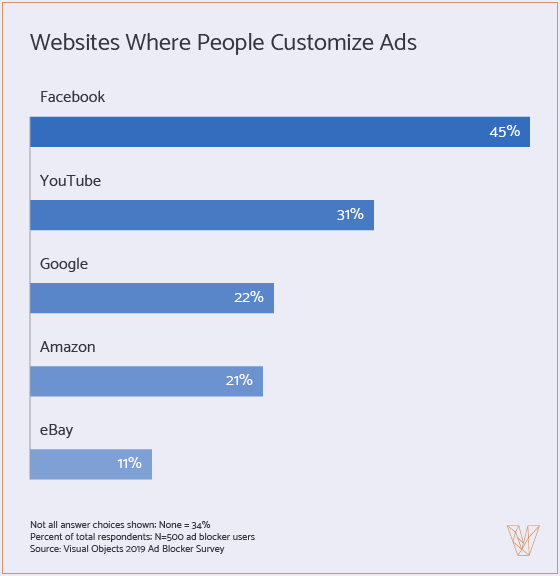
Facebook is the most popular website for customizing ad preferences, with 45% of respondents saying they have selected ad preferences on the social network. Almost one-third of people (31%) have customized ads on YouTube, and 22% have customized their ads on Google.
The practice of allowing users to customize their ad experience has grown more popular in the past few years. These customization options usually come in two forms:
- Surveys where users offer personal information in exchange for more relevant ads
- Feedback options where users can elect to stop seeing certain targeted ads
YouTube, for example, presents short surveys for viewers to complete to “improve relevance of videos and ads.”
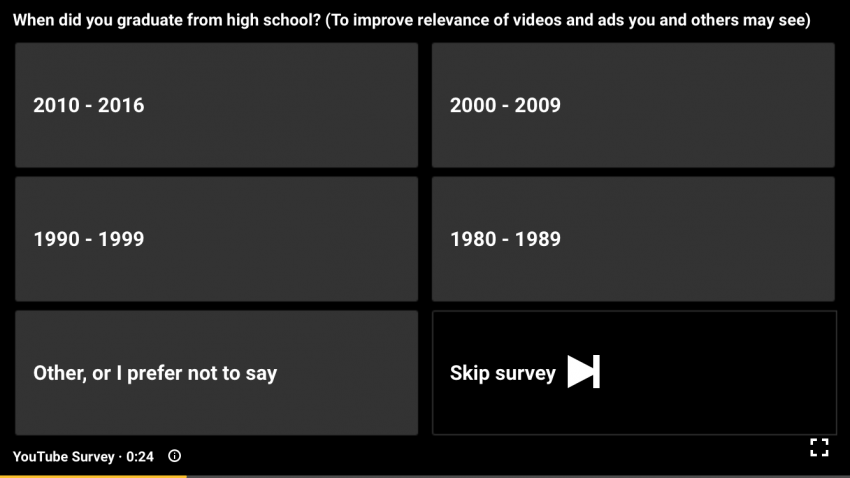
These surveys give users a choice to exchange personal information such as graduation year for more relevant advertisements.
On Facebook, users can offer feedback on ads they see by opting to “hide” advertisements that are irrelevant to their needs, such as natural food company RX’s advertisement in the image below.
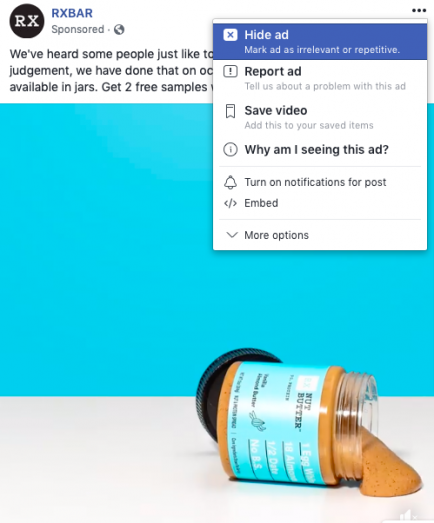
These feedback loops inform websites which ads they should show users.
Social media websites excel at providing UX-friendly feedback forms. If a Facebook user hides an ad, for example, Facebook shows the feedback form below.
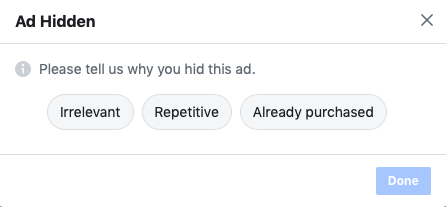
This small window is simply designed and does not obstruct content or force users to respond to close the window.
Elsewhere on the internet, feedback options on banner ads are not as user-friendly. Website users can offer feedback on most banner ads, but the ads are smaller and more challenging to click on.
To offer feedback on banner ads around the web, users must find the small button located in the right-hand corner of the ad, shown below next to the “X.”

Once users click on the button, the ad changes to a screen where users can find resources about what ads they are shown and their online privacy.

Louis Belpaire, director of paid media and analytics at Alexandria, Va.-based digital marketing agency Silverback Strategies, believes these feedback options improve outcomes for both businesses and users.
“Being able to remove irrelevant ad experiences quickly and letting the algorithm figure that out over time results in more relevant, targeted ads,” Belpaire said. “It’s really helped both advertisers and users get better-quality content.”
Belpaire believes that the feedback loop between users and ads enhances the overall user experience.
Yet businesses must ensure they are actively improving users’ ad experience based on the data they collect.
“If you’re not sifting through this data and actually using it to show better ads or to move customers down a marketing funnel, or if you just have a blog with display ads on your website for irrelevant content, it’s unlikely that users are going to click,” Martin said.
Businesses should use customer data to provide an optimal user experience by showing better ads or customizing content to meet their needs.
Explore Emerging Technology Alternatives to a Traditional Advertising Model
Despite the popularity of ad blockers and whitelisting, survey respondents are split on if they would be willing to pay a premium for an ad-free internet experience.
More than one-third of ad-blocking consumers (35%) are unlikely to pay for an ad-free internet experience, but 40% say they are likely to do so.
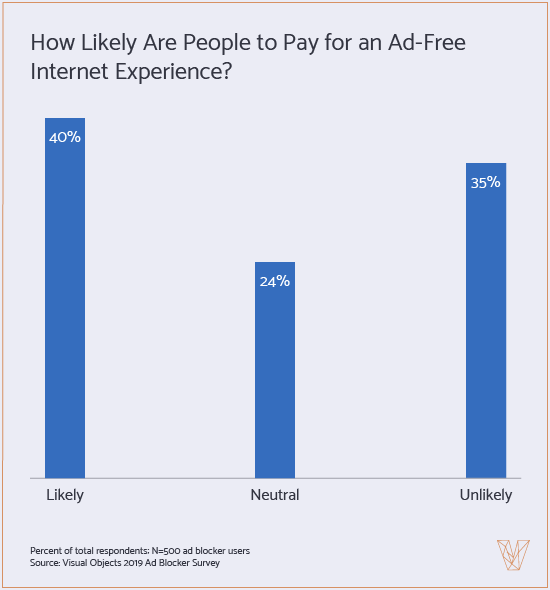
Only 24% of respondents said they were neither likely nor unlikely to pay to browse certain websites without ads.
Some publishers are already experimenting with a paid ad-free browsing model. In 2018, Salon magazine introduced timed access to ad-free content beginning at 50 cents for 1 hour of reading.
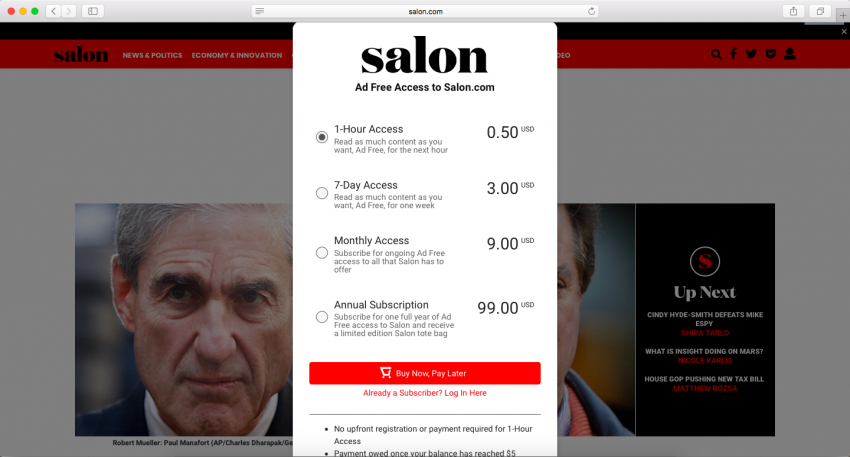
“Salon Premium” is optional, and readers can still access Salon’s content with ads. Premium, however, promises not to track any data or personal information beyond a reader’s name and email address.
Web browser Brave balances its built-in ad blocker with “Brave Rewards,” or optional payments that allow users to support publishers whose work they value.
Brave Rewards uses a form of payment called the Basic Attention Token to support publishers in a blockchain-based ad platform. Users acquire Basic Attention Tokens either through direct payments or watching non-invasive advertisements. The Tokens can then be given directly to publishers.
The number of tokens a user has is displayed in the browser’s toolbar.
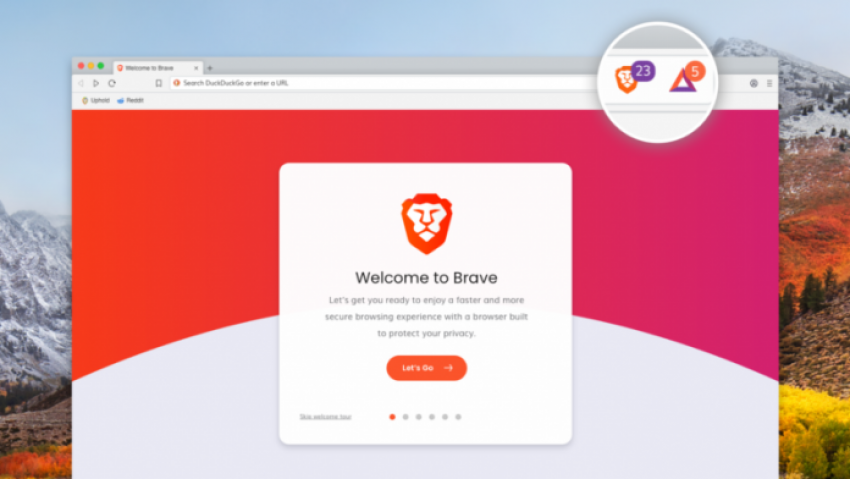
It may take some time, however, for this form of advertising to become mainstream with tech-savvy users still divided on paying for an ad-free internet experience.
Marc Heroux, marketing manager at Alert Labs, which sells intelligent sensors for homes and businesses, is willing to pay for an ad-free browsing experience if the cost is low enough.
“Just like I subscribe to Netflix, I enjoy not having to see ads,” Heroux said. “If my [internet provider] were to tack on an extra $5 or so, I wouldn't mind paying that fee if it meant I could go to news sites and watch news clips without the mandatory 30-second commercial, for example.”
Heroux would be willing to pay for an ad-free internet experience if the cost was low enough compared to the overall cost of his internet service provider.
On the other hand, Merckens would not pay for ad-free browsing.
“I would be much more likely to use a subscription service like Patreon to support [creators] who are doing great work than to pay for an ad-free internet,” Merckens said. “There is enough content out there to last a thousand lifetimes. … The important thing is to cultivate and support chosen sources of content.”
Merckens would rather support content creators individually than pay a premium for his entire browsing experience.
The rise of ad blockers may herald changes to the traditionally ad-supported model of the internet. Businesses must be aware of possible changes and adapt their revenue strategies accordingly.
Businesses Must Adapt to the Changing Online Advertising Landscape
The rise of ad-blocking technology has changed online advertising. Though advertisers and ad-supported businesses may be wary of the technology, most people who use ad blockers will selectively disable the extension, or “whitelist,” for content around the web.
These users whitelist most frequently when presented with a website that won’t function unless the ad blocker is disabled. This tactic may drive many users elsewhere for content, though, because most users will abandon a website permanently if that website fails to function correctly.
People whitelist social media websites the most where ads are least intrusive. Ads on social media are designed not to disrupt the overall user experience of that website.
Social media ads also are easily customized. People are willing to give feedback about ads on social media for a more personalized browsing experience.
Finally, the biggest change on the horizon for advertisers could be a paid, ad-free model of the internet. People who use ad blockers, however, remain split on if they would be willing to pay to browse websites without ads.
About the Survey
Visual Objects surveyed 500 people from the U.S. who use ad blockers when browsing online. Sixty-five percent (65%) are female, and 35% are male.
Survey respondents varied in age: 18% of respondents are 13-24; 30% are 25-34; 17% are 35-44; 15% are 45-54; 12% are 55-64, and 8% are 65 and over.
Respondents are from the Midwest (22%), Northeast (16%), South (36%), and West (23%).